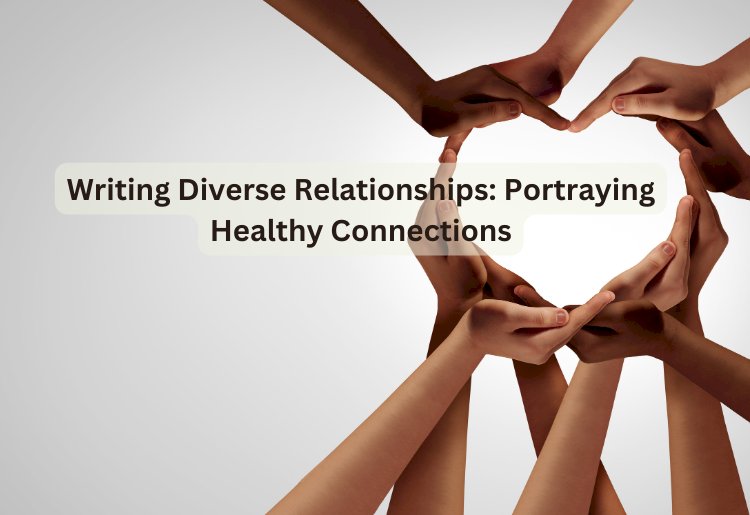Writing Diverse Relationships: Portraying Healthy Connections

Hey there, fellow writers! Are you ready to explore the intricacies of crafting diverse and meaningful relationships in your stories? Whether you're writing romance, friendship, family dynamics, or platonic connections, portraying healthy relationships is essential for creating compelling and relatable characters. In this article, we'll dive into the art of writing diverse relationships and discuss how to portray connections that are authentic, nuanced, and ultimately, enriching to your narrative.
-
Embrace Diversity: One of the keys to writing diverse relationships is to embrace diversity in all its forms. This includes representing characters from different backgrounds, cultures, identities, and experiences. By including a variety of perspectives in your storytelling, you can create a rich tapestry of relationships that reflect the complexity and diversity of the real world. Be mindful of stereotypes and clichés, and strive to portray characters in all their complexity, with strengths, flaws, and unique quirks that make them feel like real people.
-
Focus on Communication: Communication is the foundation of any healthy relationship, and it's essential to portray effective communication in your writing. Show characters actively listening to each other, expressing their thoughts and feelings openly and honestly, and resolving conflicts through dialogue and compromise. Avoid tropes of miscommunication and misunderstandings that rely on unrealistic plot devices to drive conflict. Instead, explore the nuances of communication in different types of relationships, from romantic partnerships to friendships to family dynamics.
-
Build Trust and Respect: Trust and respect are the cornerstones of healthy relationships, and it's important to show characters earning and maintaining these qualities throughout your story. Demonstrate how characters support and uplift each other, respect each other's boundaries and autonomy, and work together as equals to overcome challenges. Avoid toxic dynamics such as manipulation, coercion, or emotional abuse, and instead focus on portraying relationships that are built on mutual trust, respect, and admiration.
-
Celebrate Diversity: Celebrate the diversity of relationships by showcasing a variety of connections in your storytelling. This includes romantic relationships of all orientations and gender identities, friendships that transcend cultural or social boundaries, and family dynamics that reflect the complexities of modern life. Be inclusive and respectful of different experiences and perspectives, and strive to represent the full spectrum of human relationships in all their beauty and complexity.
-
Explore Growth and Development: Healthy relationships are dynamic and ever-evolving, and it's important to explore the growth and development of characters within the context of their connections. Show characters learning from each other, challenging each other to grow and evolve, and supporting each other through life's ups and downs. Allow relationships to change and evolve over time, reflecting the personal growth and development of the characters involved.
In conclusion, writing diverse relationships is an opportunity to explore the rich tapestry of human connections and celebrate the beauty and complexity of the human experience. By embracing diversity, focusing on communication, building trust and respect, celebrating diversity, and exploring growth and development, you can craft relationships that are authentic, nuanced, and ultimately, deeply resonant to your readers. So, go forth and weave a tapestry of connections that reflects the diverse and multifaceted nature of the human heart. Happy writing!





























